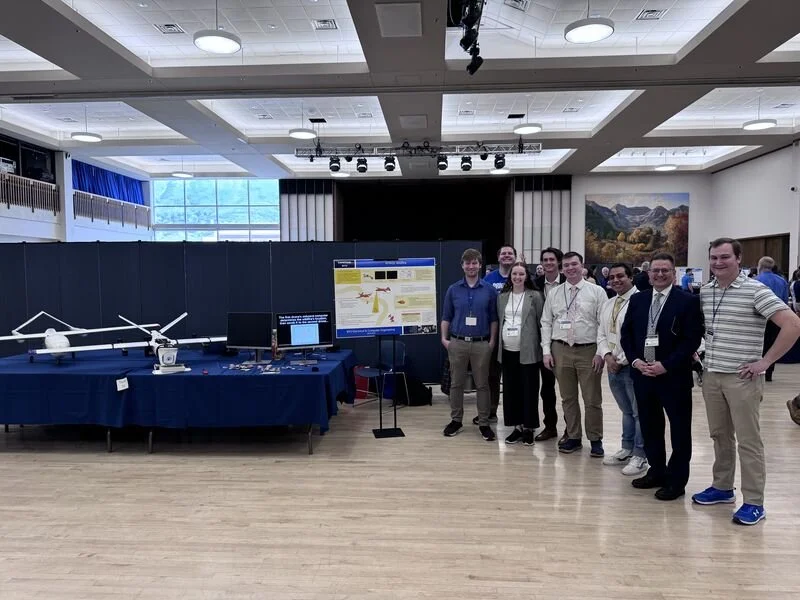In commemoration of National Roller Coaster Day, join Blake Ipsen in appreciating the hard work and technical expertise that go into designing these rides. Countless technological innovations in recent history have made new roller coasters safer, more comfortable, more reliable, and more extreme than ever before.
Small but Mighty? Mini PCs: A Modern Design Approach to Computers
From massive room-filling machines to sleek mini PCs you can hold in your hand, computer design has evolved dramatically. Joselyn Cortes describes how a mini PC offers a compact, cost-effective, and surprisingly powerful option for modern users.
How Might We… Craft Better HMW Statements?
"How Might We" (HMW) statements transform ambiguous problems into clear, opportunity-driven starting points for design. When crafted well, they inspire creativity and focus ideation. This article by Christ Mattson breaks down how engineers can leverage HMW statements to effectively reframe challenges and unlock innovative solutions.
Explained: Engineering Photography
Explore how photography bridges the gap between the technical and artistic. It's a powerful tool for showcasing innovations, stimulating creativity, and communicating complex designs, essential for engineers in all fields.
Stanley v Owala: The Big Bottle Debate
Discover which reusable water bottle reigns supreme. Learn from Emelia’s analysis as she compares Stanley Quencher and Owala FreeSip designs, insulation, and features to help you choose your perfect hydration companion.
Paperclips, Thanos, and the Perils of Overfitting
Discover the dangers of overfitting in engineering design and everyday life! From "lucky" paperclips and Thanos's flawed logic to Clippy's demise, learn how optimizing too narrowly can lead to unexpected failures. Mark McDonald reveals why robust solutions require simplification and real-world validation, avoiding the perils of over-optimization.
America the Beautiful: How Ansel Adams Designed His Landmark Landscapes
Ansel Adams's iconic landscapes weren't just pretty pictures; they were masterworks of design. This article reveals how Adams's revolutionary principles—from empathy to composition and vision-driven innovation—offer invaluable lessons for engineers seeking to craft impactful solutions.
Explained: The Design of Modern Fireworks
Explore the science and engineering behind captivating fireworks displays. From their historical origins to cutting-edge innovations, learn how customizable shells create the brilliant colors, sounds, and patterns that light up our celebrations.
The Scarf: A Most Versatile Design
Journey to Cambodia with Dr. John Salmon to discover the krama, a traditional Cambodian scarf, and its surprising versatility. Learn how this single item, rich in cultural meaning, offers a variety of practical uses, from sun protection to carrying essentials. Explore how the power of design blends beauty, meaning, and utility.
Lessons Learned from Capstone: Tips For A Successful Product Design
BYU's Capstone Program reveals how thoughtful design transforms ideas into impactful realities. Learn 14 principles for product designers to create solutions that exceed expectations, from decoding customer needs and embracing systems thinking to iterating early, guarding against scope creep, and designing for manufacturability.
The Importance of Honoring the Design Process
BYU engineering seniors gain real-world experience in Capstone, guided by experienced engineers like Darrell Goff. He stresses that understanding user needs first is paramount, preventing wasted effort. Effective brainstorming, iterative design, and a resilient team dynamic are also crucial for success, ensuring students create innovative, user-focused solutions and prepare for future careers.
Dr. Paul MacCready and The Kremer Prize
Flight! People have wondered about it since the beginning of time. Paul MacCready was one of those people deeply interested in flight. What follows is a story of Paul MacCready, and what we can learn from him in the engineering design process.
Exercises to Build Design Strength
If you’re like me, you might find yourself yearning to be a better designer but not sure where to start! I’d like to share with you some mindsets and actionable exercises we can use to grow in our design strength.
Using Engineering Intuition and Strategic Experimentation to Overcome Technical Challenges
Learn from Dr. David Parsi, a mechanical engineering Ph.D. from Brigham Young University, as he discusses his research on overcoming technical challenges in reconfigurable radio frequency instruments. He emphasizes core engineering principles such as intuition, strategic experimentation, and efficient research methodologies. Dr. Parsi's journey showcases how interdisciplinary training and a problem-solving mindset can lead to significant advancements.
Natural Problems vs. Self-Induced Problems
Natural problems make your work challenging—and valuable. But many of the headaches in engineering and design come from mistakes we create ourselves. In this article, Dr. Chris Mattson shares how to spot and eliminate self-induced problems to work smarter, not harder.
Building Confidence Through Design: How BYU Capstone Projects Shape Future Engineers
BYU capstone students tackle complex challenges head-on, transforming theory into hands-on innovation, like building a compact noise-testing station for Varex Imaging. Author Amber Glorius interviews capstone coach Robert Cloward to explore how these projects build both skills and confidence.
5 Design Lessons I’ve Learned From Watching Too Much Shark Tank
From a door lock that flips tradition upside down to a pair of finger chopsticks for snacking while you work, Shark Tank is full of design inspiration. In this article, Blake takes a dive into some of the most important design lessons we can learn from Shark Tank.
The Principles of Garden Design and Their Application Beyond Landscapes
Design inspiration can come from unexpected places—like a garden. This article looks at how the core principles behind garden design—unity, balance, contrast, and more—can be applied beyond landscaping to fields like engineering, product development, and user experience. By examining the purpose and planning behind well-known gardens, we uncover how thoughtful design rooted in nature can lead to more intentional, people-focused creations in any discipline.
"Albert Einstein: His Life and Universe" by Walter Isaacson
Walter Isaacson’s Albert Einstein: His Life and Universe presents a nuanced portrait of Einstein, blending his scientific achievements with personal struggles and insights. Dr. John Salmon offers his insights to this must-read for those seeking inspiration from one of history’s greatest minds.
A Plausible Future: The AI / Designer Partnership
Imagine a world where designers and AI work hand in hand, pushing creative boundaries and optimizing workflows. That future is already here. AI is not a replacement for human ingenuity—it’s a tool that amplifies it, and those who master it will shape the next era of design.



















